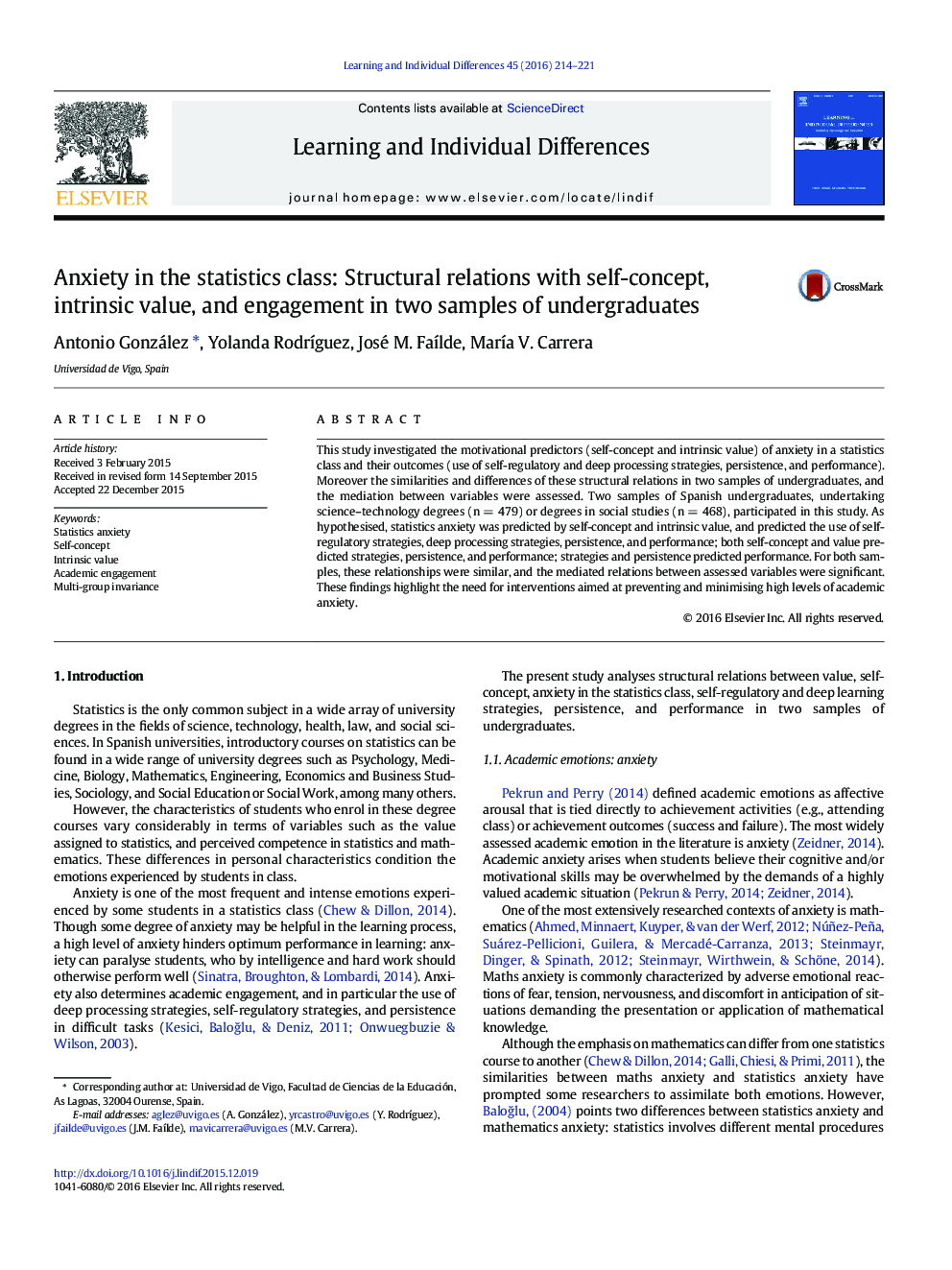| کد مقاله | کد نشریه | سال انتشار | مقاله انگلیسی | نسخه تمام متن |
|---|---|---|---|---|
| 364522 | 621073 | 2016 | 8 صفحه PDF | دانلود رایگان |
• Motivation, class anxiety and engagement predicted grades in statistics.
• The structural model was similar for both science and social studies undergraduates.
• Anxiety negatively mediated the relations between motivation and engagement.
• The effect of motivation on grades was mediated by anxiety and engagement.
This study investigated the motivational predictors (self-concept and intrinsic value) of anxiety in a statistics class and their outcomes (use of self-regulatory and deep processing strategies, persistence, and performance). Moreover the similarities and differences of these structural relations in two samples of undergraduates, and the mediation between variables were assessed. Two samples of Spanish undergraduates, undertaking science–technology degrees (n = 479) or degrees in social studies (n = 468), participated in this study. As hypothesised, statistics anxiety was predicted by self-concept and intrinsic value, and predicted the use of self-regulatory strategies, deep processing strategies, persistence, and performance; both self-concept and value predicted strategies, persistence, and performance; strategies and persistence predicted performance. For both samples, these relationships were similar, and the mediated relations between assessed variables were significant. These findings highlight the need for interventions aimed at preventing and minimising high levels of academic anxiety.
Figure optionsDownload as PowerPoint slide
Journal: Learning and Individual Differences - Volume 45, January 2016, Pages 214–221
